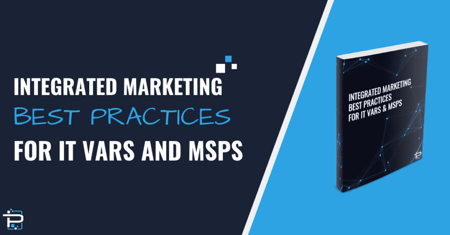Google Analytics (GA) is the gold standard when it comes to measuring website traffic and marketing conversion metrics. Even if you’re not running any advertising on the Google network, having GA in place on your website is a smart tactic to help you gain important insights on audience behavior, traffic flow across your sitemap, and much more.
There are many important functionalities within Google Analytics, but the ones that contain the most value for IT VARs and MSPs are users, bounce rate, and device type.
Capturing your viewer benchmark
Seeing the number of unique viewers and sessions is important to measure website growth metrics. Capturing your baseline, the number of daily, weekly, or monthly users who visit your site, will allow you to establish growth goals overtime. A 30% increase in unique sessions over a 90-day period is realistic with the right marketing plan in place.
Why does the number of unique viewers matter? It seems obvious, but if you’re noticing that the majority of your traffic is made up of returning visitors, this could indicate that your website might be hard to find and/or not displaying in relevant search queries.
To remedy this and start to build better brand awareness, consider running a modest Google advertising campaign using keywords that matter to your industry, services, and unique offering. Additionally, beginning to explore SEO tactics to optimize your site will clue you in to what your site may be missing and why your target audience may not be finding your site quickly and easily.
Encouraging an extended site visit
The bounce rate, indicated by a percentage, shows you the rate at which people land on a page and then immediately leave. The default in GA is set to 30 seconds to capture a bounce. This means that anytime a visitor navigates to your page and leaves within 30 seconds without clicking to another internal page or completing any type of conversion, a bounce is registered.
Although some pages are designed to provide a snapshot of information quickly, which would logically contribute to a higher bounce rate, there should always be a call-to-action even on the simplest of pages. Calls to action include any engagement point where you want the audience to actually do something, such as clicking a link (to an internal or external page) for more information, signing up for a newsletter, or visiting your blog.
A bounce rate around 50% is about average. Again, this may indicate that your audience found what they were looking for and moved on. However, there is always more to offer a visitor than what they initially planned to find. Maybe your company unveiled a new service offering or established a new technology partner; these are great pieces to showcase in a blog post or new page within your site.
Desktop vs Mobile Users: Is your site optimized for both?
Google Analytics shows you the percentage of visitors who view your website both on desktop and mobile. You can dive even deeper to see which browsers they’re using and the type of smartphones they’re on. This information is important, especially if your website isn’t optimized for a seamless mobile experience.
Google has started giving more SEO credits to companies whose websites are optimized for mobile viewing. Do your images shrink when someone looks at your page on their phone? Does your navigation menu condense into a touch-friendly display on the side of the screen? If your answer to any of these questions is no, then it’s time to invest in a new responsive website design so that your mobile visitors aren’t turned off by a difficult experience on their phones and tablets.
Like all brands, MSP and VAR websites speak to multiple roles within their client’s, partner’s, and competitor’s organizations. Providing complete brand continuity across all device types is a critical first step in delivering an optimal experience for your audience.
In conclusion, Google Analytics is an intelligent (not to mention FREE) method for capturing benchmark data on the health and performance of your website. Implementation takes just minutes, but the insights it provides can power your digital strategy today and into the future.
Google Analytics is just one of the basic marketing must-haves for VARs and MSPs. Learn more in our FREE marketing playbook. Click below to get started.
